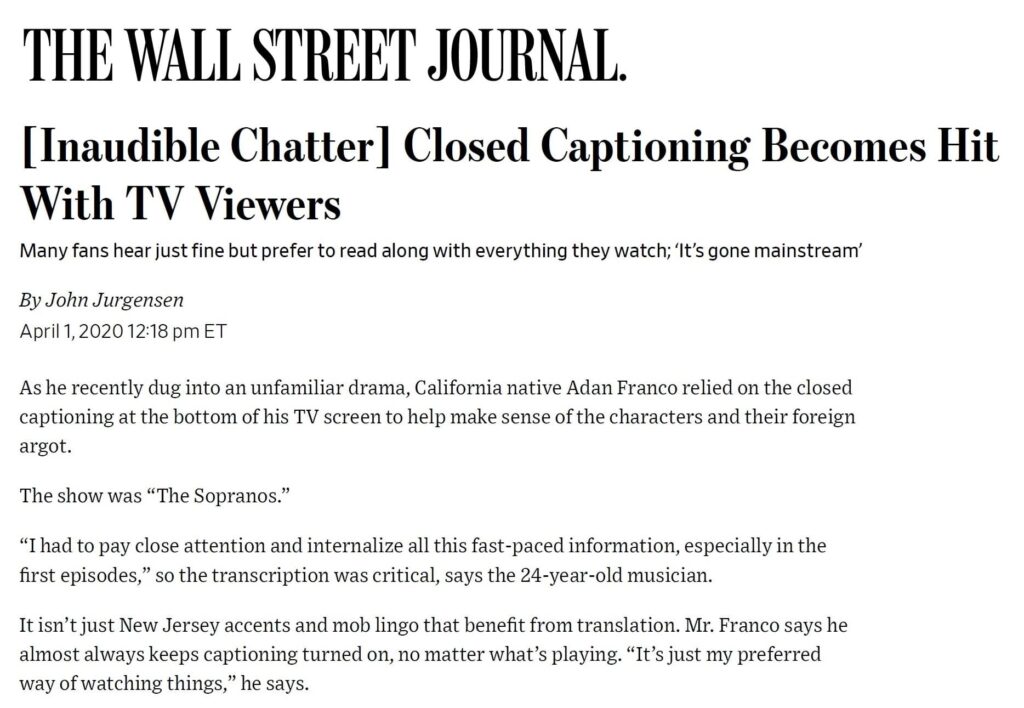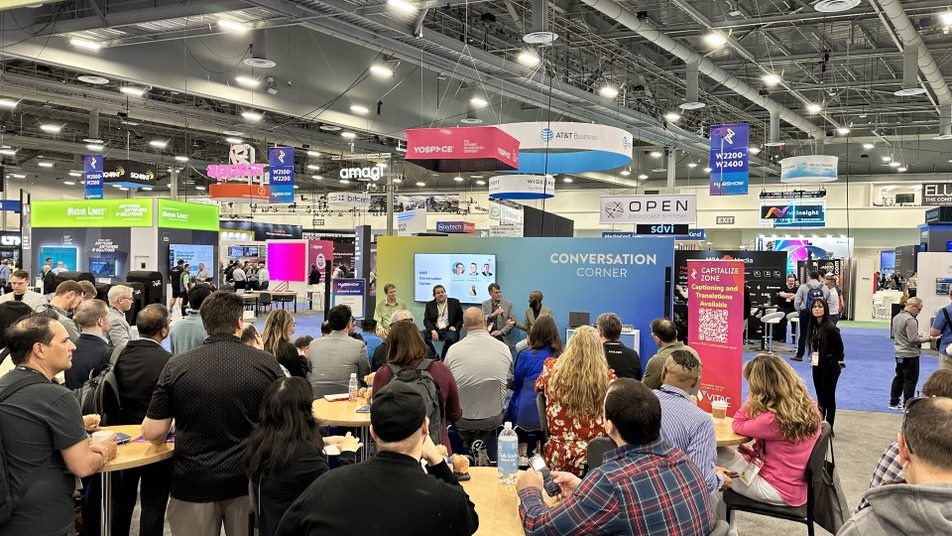An article in The Wall Street Journal (“[Inaudible Chatter] Closed Captioning Becomes Hit with TV Viewers”) takes a look at how captions have grown in popularity in both the deaf and hearing communities.
 The article states:
The article states:
“Subtitles have always been required reading for people watching foreign-language films. And for deaf and hard-of-hearing audiences, captioning is vital to any screen experience involving sound.
“[But] some of the people most committed to captioning don’t need it at all. They are viewers who hear just fine but prefer to read along with everything they watch, including TV shows and movies in their own language, as a hack to better understand what is happening on screen.
“It is a subculture of sub-text that veterans of the captioning industry say is growing. Driving the habit: the multitasking ways of younger viewers, and the broader influence of phones and other personal screens that overflow with captioned imagery, from internet memes to video clips that spread on social media.”
VITAC has been in the captioning and accessibility business for more than three decades, and we’ve seen this growth firsthand as customers across a wide range of industries − including corporations, media and entertainment providers, government agencies, educational institutions, and conference and event centers, just to name a few − have relied on us for professional captions and accessibility.
When captions first appeared on American television screens in the early 1970s, broadcast TV was the king of video content. Today, with the emergence of on-demand video, more and more people – in every community – are watching content whenever and wherever they want. We can watch yesterday’s Tonight Show tomorrow from smartphones on the bus, laptops in the office, and tablets on the beach.
Additionally, businesses of all sizes routinely add captions to meetings and training videos to better accommodate all employees, teachers use captions to help younger students read and older students retain information, stadiums display captions on the scoreboard for all to see, and movie theaters can display captions on the silver screen. (Click to read about more places in which captions are popping up.)
Captions allow everyone greater accessibility to content, whether it be via TV, movies, or social media. And they continue to appear in new and exciting places – and everywhere inclusion and accessibility are desired.




